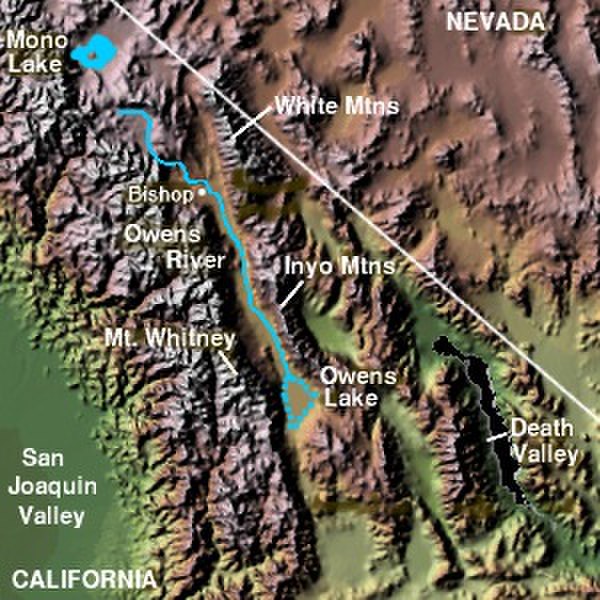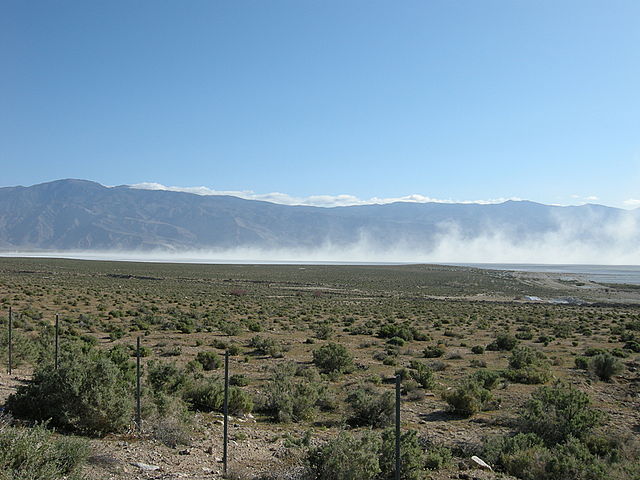Manzanar is the site of one of ten American concentration camps, where more than 120,000 Japanese Americans were incarcerated during World War II from March 1942 to November 1945. Although it had over 10,000 inmates at its peak, it was one of the smaller internment camps. It is located at the foot of the Sierra Nevada mountains in California's Owens Valley, between the towns of Lone Pine to the south and Independence to the north, approximately 230 miles (370 km) north of Los Angeles. Manzanar means "apple orchard" in Spanish. The Manzanar National Historic Site, which preserves and interprets the legacy of Japanese American incarceration in the United States, was identified by the United States National Park Service as the best-preserved of the ten former camp sites.
Unlined section of the Los Angeles Aqueduct, just south of Manzanar near U.S. Route 395, 2007
Two-year-old Yuki Okinaga Hayakawa waits at Union Station for the train taking her and her mother to Manzanar (April 1942)
Barrack row looking west to the desert and mountains beyond (July 2, 1942)
Waiting for lunch outside a mess hall at noon on July 7, 1942
Owens Valley is an arid valley of the Owens River in eastern California in the United States. It is located to the east of the Sierra Nevada, west of the White Mountains and Inyo Mountains, and is split between the Great Basin Desert and the Mojave Desert. The mountain peaks on the West side reach above 14,000 feet (4,300 m) in elevation, while the floor of the Owens Valley is about 4,000 feet (1,200 m), making the valley the deepest in the United States. The Sierra Nevada casts the valley in a rain shadow, which makes Owens Valley "the Land of Little Rain". The bed of Owens Lake, now a predominantly dry endorheic alkali flat, sits on the southern end of the valley.
Owens River from Bishop Tuff tableland.
Image: Wpdms shdrlfi 020l owens valley
Owens Valley, photographed from Sawmill Pass by Ansel Adams, circa 1936.
Alkaline dust blowing off the dry bed of Owens Lake








